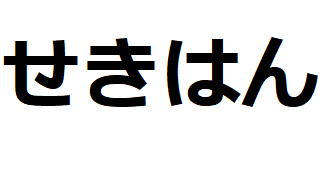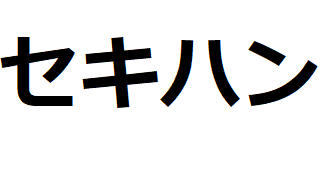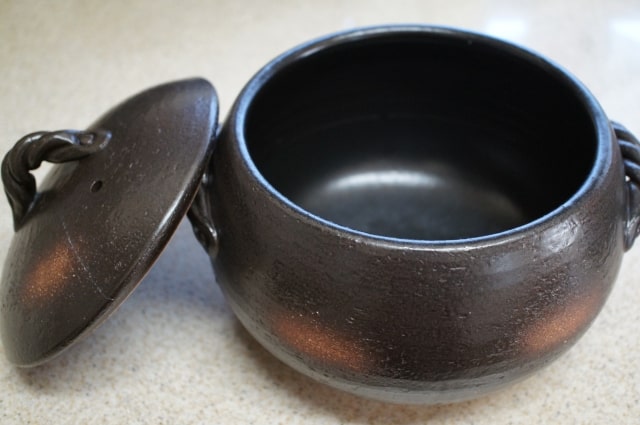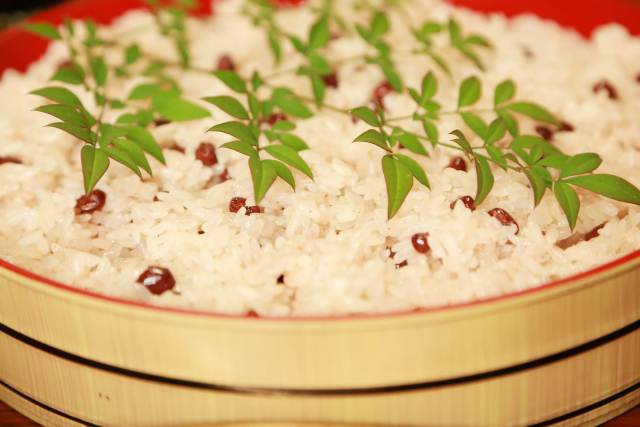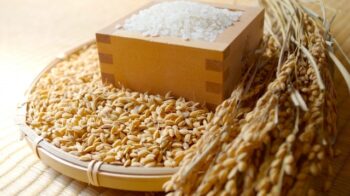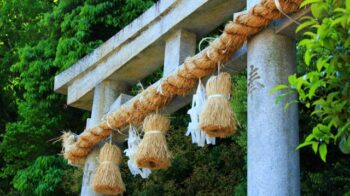Recipe (rice)
Welcome to Recipe (rice) .
You can find two recipes : 1) ordinary rice (white rice) and 2) Sekihan (red rice).
In Japan, you can find electric cookers in many families.
But recently, more and more families use a clay pot.
Because it’s simple and we can easily adjust the cooking style according to our preference.
Therefore let’s try it, if you have a clay pot.
Below is the contents of this page.
Recipe 1: White rice
Ingredients (For 4 people)
a) Rice (2 cups)
b) Water (2 cups)
- Wash the a) rice.
Knead it with the palm under water to wash off the bran - Put it in a clay pot and add b) water.
If you have time, leave it for about 30 minutes to make it absorb water. - Cover the pot and put it on high heat.
When it boils, turn down the heat and leave it for 5 minutes. - Turn off the heat and steam it for 20 minutes.
- Fluff it.
Recipe 2: Sekihan (red rice)
As well as white rice rice, we can cook Sekihan in a clay pot.
How can rice become red?
The broth of red beans turns the rice colour from white to red.
Therefore we prepare red beans in advance to get the red broth.
In this recipe, we use both sticky rice and ordinary rice.
Because sticky texture is loved in Japan (as you can guess from our love for Natto).
But, of course, you can try it by using only ordinary rice.
Ingredients (For 4 people)
a) sticky rice (300 g)
b) ordinary white rice (150 g)
c) red beans (50 g)
Preparation of Red beans
- Rinse c) red beans with water and put them in a pan with plenty of water. Heat them over high heat and keep it boiling for about 5 minutes.
- Put 600 ml of water in above 1. and heat. When it boils, reduce the heat to low and cook the red beans.
- Take out the red beans from the pan and wrap them so as not to dry them.
- Leave the broth in the pan and cool it down.
How to cook
- After washing a) sticky rice and b) white rice 3-4 times together. Raise it in a colander and drain it well.
- Weigh 540 ml of cold broth (above 4). Add water if it’s not enough.
- Put it in a clay pot with the washed rice and leave it for 1 hour.
- After 1 hour, sprinkle the boiled red beans in a clay pot and place the pot on medium high heat.
- When steam comes out vigorously from the hole in the lid, reduce the heat to extremely low and cook it for another 8 minutes
- After 8 minutes, turn off the heat and leave it for 15-20 minutes with the lid on.
- After 15-20 minutes, mix the whole from the bottom of the pot and eliminate excess fluid.
Kanji and Kana
1) Kanji
To learn Kanji (Chinese characters) is always interesting and beneficial to understand what the word means.
Through Kanji, we can virtually grasp not only the meaning of the word, but also the background it was born in.
Kanji for Sekihan is 赤飯.
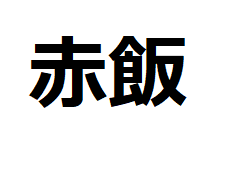
Firstly, 赤 (seki).
赤 is an ideograph which conbines 大 and 火. 大 means big and 火 means fire. Therefore, initially, 赤 described a big fire whose colour is red and subsequently, it came to indicate the red colour. Incidentally, we also pronounce 赤 aka.
Secondly, 飯 (han).
On the left part, you can find 食 which means eat.
On the other hand, on the right part, you can find 反 which means a lid and hands.
In total, 飯 mean foods served with a lid after being cooked with hands.
Incidentally, we also pronounce 飯 as meshi.
2) Kana
By the way, there are two phonograms (kana) in Japanese: 1) Hiragana and 2) Katakana.
According to the most supported theory, both of them were formed by adopting one element of a Kanji character with similar sounding.
Originally, Hiragana were only for women. But today, it has by far the wider usage. As for 2) Katakana, we use it mainly for foreign origin words.
Incidentally, there are 46 characters in both Hiragana and Katakana systems.
Hiragana for Sekihan is せきはん and Katakana is セキハン.
